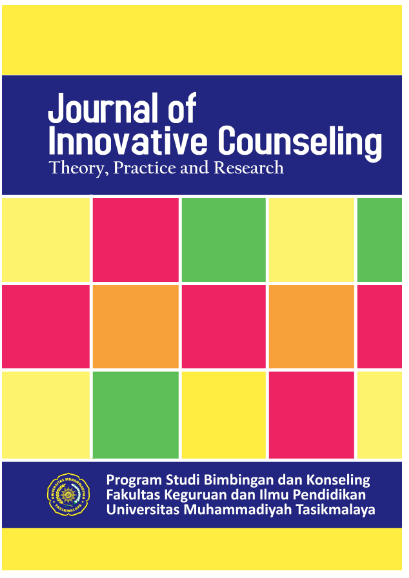Gambaran Gaya Koping (Coping Style) Pada Pelaku Melukai Diri (Self Injuri)
Keywords:
Coping Style, Self Harm, Emotional ImpactAbstract
This study aims to determine the type of coping style used by the perpetrator of self- harm. The research method used in this study is a qualitative approach with a case study research design. The main data source was obtained through one adolescent perpetrator of self-harm as a resource person and supporting data was obtained through three informants. Data collection technique
The data collection technique uses an online interview process due to the influence of the covid-19 pandemic situation. The results showed that the type of coping style used by self-injurers is avoidance coping. Avoidance coping is used by self-injurers as a form of ignoring the problem by doing other activities, namely self-harm to overcome the emotional impact.
Downloads
References
Alderman, T. (1997). The Scarred Soul : Understanding & Ending Self-Inflicted Violence. Oakland, CA : New Harbinger.
Beasley, M. (2001). Resilience In Response To Life Stress: The Effects Of Coping Style And Cognitive Hardiness on The Psychological Health of Mature Age Students (Doctoral dissertation, University of Tasmania)
Compas, B. E. (1987). Coping With Stress During Childhood and Adolescence. Psychological Bulletin. 101(3)
Cha & Nock. (2011). Nonsuicidal Self Injury. Encyclopedia of Adolescence, Volume 3.
Frydenberg, E. (1991). Adolescent Coping Styles and Strategies: Is There Functional and Dysfunctional Coping.
Journal of Psychologists and Counsellors in Schools. 1, 35-42.
Goncalves, T., Lemos, M. S., & Canário, C. (2019). Adaptation And Validation Of A Measure of Students‟ Adaptive
And Maladaptive Ways of Coping With Academic Problems. Journal of Psychoeducational Assessment, 37(6),
-796
Konopka, G. (1980). Coping With The Stresses and Strains Of Adolescence. Social Development Issues. 4(3). Khalifah, Sayyidah. (2019). Dinamika Self Harm Pada Remaja. Skripsi UIN SUNAN AMPEL Surabaya : Tidak
diterbitkan.
Kurniawaty, Ria. (2012). DINAMIKA PSIKOLOGIS PELAKU SELF-INJURY (STUDI KASUS PADA WANITA
DEWASA AWAL). Jurnal Penelitian dan Pengukuran Psikologi. 1(1).
Klonsky, E. D., & Jennifer (2007). Self Injury: A Research Review For The Practioner. Wiley Interscience.
Nock, Matthew. K. (2010). Self Injury. Department of Psychology, Harvard University.
Patterson, J. M., & McCubbin, H. I. (1987). Adolescent Coping Style and Behaviors: Conceptualization and
Measurement. Journal of Adolescence. 10(2).
Putro, Khamim Zarkasih. (2017). Memahami Ciri dan Tugas Perkembangan Masa Remaja. APLIKASIA: Jurnal
Aplikasi Ilmu-ilmu Agama. (17)1.
Saputra, Dinar. dkk. (2019). Penerapan Art Therapy Untuk Mengurangi Perilaku Menyakiti Diri Sendiri (Self-
Injurious Behavior) Pada Dewasa Muda yang Mengalami Distress Psikologis. INQUIRY Jurnal Ilmiah
Psikologi. 10(1).
Sornberger,M.J.,Smith,N.G.,Toste,J.R.,&Heath,N.L.(2013).NonsuicidalSelf‐ Injury,CopingStrategiesand
Sexual Orientation. Journal of Clinical Psychology. 69(6).
Simeon & Eric. (2001). Self Injurious Behaviors Assesment and Treatment. American Psychiatric Publishing, Inc :
Washington, DC.
Utomo & Tatik. (2015). Kebermaknaan Hidup, Kestabilan Emosi dan Depresi. Jurnal Psikologi Indonesia. 4(03). Walgito, B. (2004). Pengantar Psikologi Umum. Yogyakarta: Andi.
Yusuf, & Juntika Nurihsan. (2014). Landasan Bimbingan & Konseling. Remaja Rosdakarya : Bandung.
Yusuf, Syamsu. (2017). Bimbingan & Konseling Perkembangan : Suatu Perkembangan Komprehensif. Refika
Aditama : Bandung.




